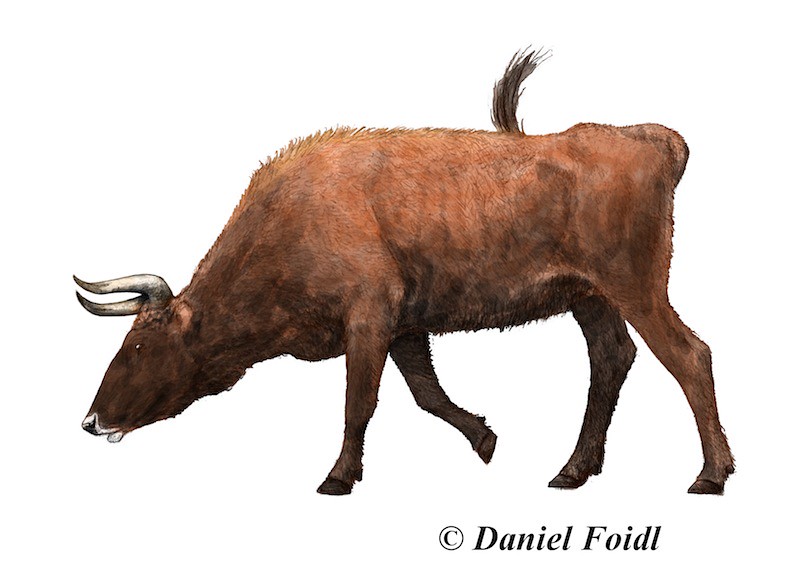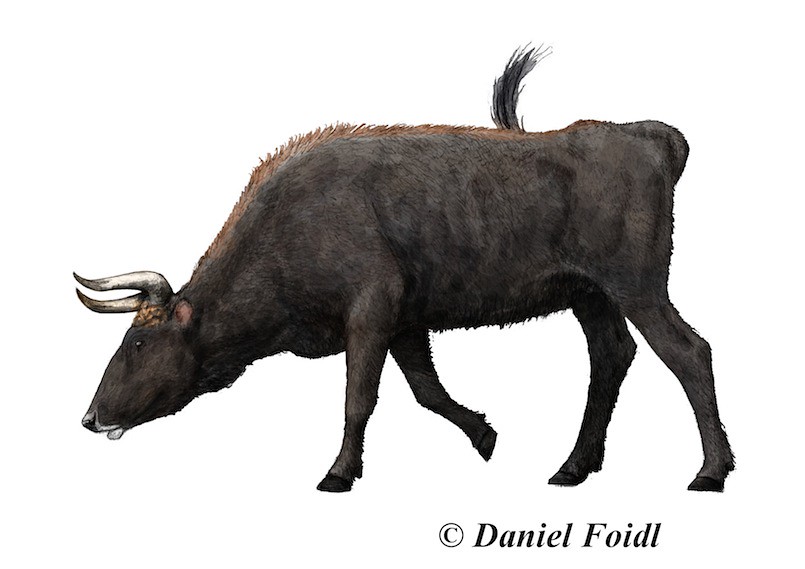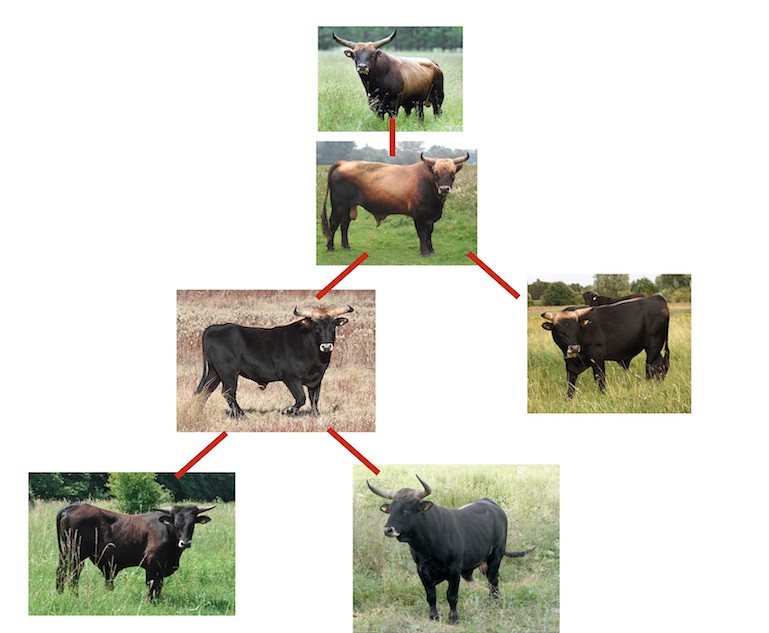The Croatian Velebit is home to a herd of Boskarin cows owned by the Tauros Project. Boskarin are cattle of the Steppe-type, with influence of Podolica, Maremmana and Chianina. They lack, typically for the Steppe-type cattle group, the red pigment in their coat colour, have horns varying in size from medium- to large-sized, are upright and varying curvature (tending to the lyre-shaped type of Gray cattle). The skull seems to be either longish or "normal", but not paedomorphic. I am basing my description of their looks on the photos on the web.
Sayaguesa will add the necessary amount of red (and black) pigment, and also turn the horns forwards. The long snout of Sayaguesa is positive as well of course. Perhaps there will be some nicely aurochs-like individuals in the second generation (first-generation animals might look good too, but these are genetically irrelevant). Second generation means that we will have to wait for about 3 years until they are born (roughly one year until the first generation is born, depending on when the bull first covers the cows), plus another 2 years until - at the earliest - the first young cows are ready to be inseminated by the bulls. Then, another 9 months pregnancy + 2 years at least until you can get an idea how the crossbreeds will work work out. This makes eight years, so we will have to be patient.
"Breeding-back" aims to restore or immitate extinct animals by selective breeding. This blog provides general information, the facts behind myths and news from various projects.
Tuesday, 11 November 2014
Sunday, 9 November 2014
Female aurochs in different colours
In my post "Female Aurochs remastered" I revised my previous reconstruction of the Sassenberg specimen, which I now believe was too slender and lanky. The new result looks more credible and natural to me. I did the new reconstruction in a dark chestnut brown coat colour like that of many Maronesa and Heck cows, which also appreciates Schneeberger's description from the 16th century.
Now I did this cow in two other aurochs cow colours. One of them being the shiny orange-red at the trunk that gets darker towards neck, head and legs, and the other one is simply a black bull colour - we know that such cows existed.
Now I did this cow in two other aurochs cow colours. One of them being the shiny orange-red at the trunk that gets darker towards neck, head and legs, and the other one is simply a black bull colour - we know that such cows existed.
Two "new" bulls from the Lippaue
My last post here as been long ago, I apologize. The times are very busy and my motivation was, honestly, meager... Nevertheless, I decided to present two photos of Taurus bulls at the Lippaue that I haven't covered here yet in great detail. I was provided with the photos by Matthias Scharf from the ABU.
This bull is called "Linnet". It is half-Sayaguesa and half a mix of Sayaguesa, Chianina and Heck. In summ he is 75% Sayaguesa. Unfortunately his trunk seems to be a bit long for an advanced Taurus bull, but I like his muscular stature. Unfortunately he has a colour saddle. The horns are thick at the base and nicely curved, but they "stop to early", their tips would have to continue to grow in order to reach the right curvature.
This is a nameless son of Lamarck and this cow. Both are Sayaguesa x (Chianina x Heck) and fullblood siblings. Consequently, this son is a true F2 in the strict genetic sense and there is a chance that more the good features he has are homozygous than in its parents, respectively. Of course his two good-looking parents would also produce less good-looking animals. I really like this young bull - colour, horn size, hump and skull shape are very good. The horn curvature could be better, but I like the horns overall. Based on this photo I can't really judge its proportions. I was told that he isn't large unfortunately. He is a breeding bull at the moment.
Here is the genealogy of his ancestors and relatives. The bull at the top is a fullblood Heck called Lancelot, from the Neandertal. Its son Luca is half-Chianina. With a Sayaguesa cow (I assume it is the same mother, but there always were several Sayaguesa cows in the reserve) he produced the bulls in the middle, one of them being Lamarck. I don't know the full ancestry of Lamarcks son on the left, but I think it has much Sayaguesa in it.



